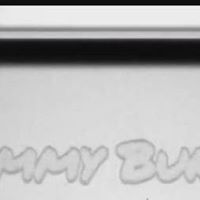Thomas L Bunn
age ~67
from Livermore, CA
- Also known as:
-
- Thomas Lester Bunn
- Thomas Te Bunn
- Thomas J Bunn
- Thomas S Bunn
- Tom Bunn
- Phone and address:
-
2890 Chateau Way, Livermore, CA 94550
8055581245
Thomas Bunn Phones & Addresses
- 2890 Chateau Way, Livermore, CA 94550 • 8055581245
- 2767 Licia Pl, Simi Valley, CA 93065 • 8055846455
- West Hills, CA
- Pell City, AL
- West Hills, CA
- Port Hueneme, CA
- 2890 Chateau Way, Livermore, CA 94550 • 8059089392
Work
-
Position:Service Occupations
Specialities
Bankruptcy • Commercial Law • Real Estate • Trial Practice • Appellate Practice • Water Law
Isbn (Books And Publications)



Resumes

Project Scientist
view sourceLocation:
2890 Chateau Way, Livermore, CA 94550
Industry:
Research
Work:
Lawrence Livermore National Laboratory
Project Scientist
Boeing Jun 1988 - Mar 2010
Project Engineer
Uc Santa Barbara Dec 1985 - May 1988
Postdoctoral Research Associate
Project Scientist
Boeing Jun 1988 - Mar 2010
Project Engineer
Uc Santa Barbara Dec 1985 - May 1988
Postdoctoral Research Associate
Education:
University of North Carolina at Chapel Hill
Doctorates, Doctor of Philosophy, Chemistry Eastern Michigan University
Bachelors, Bachelor of Science, Chemistry California Lutheran University
Master of Business Administration, Masters, Finance
Doctorates, Doctor of Philosophy, Chemistry Eastern Michigan University
Bachelors, Bachelor of Science, Chemistry California Lutheran University
Master of Business Administration, Masters, Finance
Skills:
Physical Chemistry
Aerospace
Technology Management
Program Management
Systems Engineering
System Design
Optical Engineering
Aerospace
Technology Management
Program Management
Systems Engineering
System Design
Optical Engineering
Languages:
English

Thomas Bunn
view source
Thomas Bunn
view source
Thomas Bunn
view source
Thomas Bunn
view source
Thomas Bunn
view source
Thomas Bunn
view sourceIndustry:
Military

Business Development At Core Capital Group
view sourceLocation:
United States
Name / Title
Company / Classification
Phones & Addresses
Owner
Bunn Jr, Thomas S
Legal Services Office
Legal Services Office
301 E Colo Blvd, Pasadena, CA 91101
Partner
Lagerlof, Senecal, Bradley, Gosney & Kruse Llp
Legal Services Office · Legal Services
Legal Services Office · Legal Services
301 N Lk Ave, Pasadena, CA 91101
6267939400
6267939400
Owner
The Solarcal Company
Research and Development
Research and Development
2767 Licia Pl, Simi Valley, CA 93065
8055846455
8055846455
Us Patents
-
Treatment Of Chloralkali Feeds Containing Hydrogen Peroxide And Base
view source -
US Patent:6763051, Jul 13, 2004
-
Filed:May 20, 2002
-
Appl. No.:10/151653
-
Inventors:Thomas L. Bunn - Simi Valley CA
Stephen C. Hurlock - Simi Valley CA
Alan Z. Ullman - Northridge CA -
Assignee:The Boeing Company - Seattle WA
-
International Classification:H01S 3915
-
US Classification:372 89, 4234991, 4234993, 4234994, 4234995
-
Abstract:A method and apparatus for removing BHP contaminants (alkali hydroxide and H O ) from a recycled aqueous alkali chloride solution stream before the stream is fed to a chloralkali cell so that the contaminants do not impair the operation of a chloralkali cell. Unwanted alkali hydroxide within the recycled alkali chloride brine solution is reacted with chlorine gas and converted into an alkali chloride, which is useful in the operation of the chloralkali cell, and oxygen gas, which is outgassed from the system. Any H O remaining in the recycled stream after elimination of the alkali hydroxide is reacted with chlorine to form HCl and oxygen gas. The HCl raises the pH of the brine solution, after which the pH may be adjusted by the addition of supplemental alkali hydroxide.
-
Production Of Basic Hydrogen Peroxide For Chemical Oxygen-Iodine Laser Devices
view source -
US Patent:6884337, Apr 26, 2005
-
Filed:May 20, 2002
-
Appl. No.:10/151610
-
Inventors:Peter D. Amdisen - West Hills CA, US
Thomas L. Bunn - Simi Valley CA, US
Alan Z. Ullman - Northridge CA, US -
Assignee:The Boeing Company - Seattle WA
-
International Classification:C25B001/30
-
US Classification:205466, 205516, 205536, 205620, 423584
-
Abstract:A method of generating basic hydrogen peroxide (BHP) fuel for a chemical oxygen-iodine laser (COIL) using stored alkali chloride, typically potassium chloride, and water. The alkali chloride and water are mixed to form a saturated or nearly saturated aqueous salt solution for use as an anolyte feed to a chlor-alkali cell. The chlor-alkali cell generates alkali hydroxide, hydrogen, and chlorine. Water and oxygen are reacted to form peroxide which is combined with the alkali hydroxide from the chlor-alkali cell to form a dilute solution of BHP, a mixture of hydrogen peroxide and alkali hydroxide, which dissociates into OH and OH. The BHP is concentrated and the molar ratio of hydrogen peroxide to alkali hydroxide is adjusted to 1:1 before the BHP is supplied to a COIL apparatus as fuel for the lasing process.
-
Treatment Of Chloralkali Feeds Containing Hydrogen Peroxide And Base
view source -
US Patent:6922429, Jul 26, 2005
-
Filed:Mar 29, 2004
-
Appl. No.:10/812045
-
Inventors:Thomas L. Bunn - Simi Valley CA, US
Stephen C. Hurlock - Simi Valley CA, US
Alan Z. Ullman - Northridge CA, US -
Assignee:The Boeing Company - Seattle WA
-
International Classification:H01S003/915
-
US Classification:372 89, 372 55, 205466, 204242, 422129, 422234, 422269
-
Abstract:A method and apparatus for removing BHP contaminants (alkali hydroxide and HO) from a recycled aqueous alkali chloride solution stream before the stream is fed to a chloralkali cell so that the contaminants do not impair the operation of a chloralkali cell. Unwanted alkali hydroxide within the recycled alkali chloride brine solution is reacted with chlorine gas and converted into an alkali chloride, which is useful in the operation of the chloralkali cell, and oxygen gas, which is outgassed from the system. Any HOremaining in the recycled stream after elimination of the alkali hydroxide is reacted with chlorine to form HCl and oxygen gas. The HCl raises the pH of the brine solution, after which the pH may be adjusted by the addition of supplemental alkali hydroxide.
-
Methods And Apparatus For Simultaneous Chlorine And Alkaline-Peroxide Production
view source -
US Patent:7025868, Apr 11, 2006
-
Filed:Jan 7, 2003
-
Appl. No.:10/338648
-
Inventors:Thomas L. Bunn - Simi Valley CA, US
Alan Zachary Ullman - Northridge CA, US -
Assignee:The Boeing Company - Chicago IL
-
International Classification:C25B 1/30
C25D 17/00 -
US Classification:205466, 205618, 204252, 204263, 204265, 204266
-
Abstract:An electrolytic cell for producing chlorine and basic hydrogen peroxide suitably includes an anode partition and a cathode partition separated by a membrane. The cathode partition is divided into a catholyte compartment and a gas plenum by a gas diffusion cathode. The anode partition electrolyzes alkali chloride received from the laser to produce free chlorine and alkali ions. The catholyte partition reduces oxygen received from the gas plenum through the cathode, and produces alkaline peroxide from the oxidized components combined with alkali ions received through the membrane from the anode partition. The cell is particularly useful in a fuel regeneration system (FRS) for a chemical oxygen iodine laser (COIL).
-
Treatment Of Chloralkali Feeds Containing Hydrogen Peroxide And Base
view source -
US Patent:7195740, Mar 27, 2007
-
Filed:Mar 29, 2004
-
Appl. No.:10/812048
-
Inventors:Thomas L. Bunn - Simi Valley CA, US
Stephen C. Hurlock - Simi Valley CA, US
Alan Z. Ullman - Northridge CA, US -
Assignee:The Boeing Company - Seattle WA
-
International Classification:B01J 19/00
C01D 3/14 -
US Classification:422129, 4234991
-
Abstract:A method and apparatus for removing BHP contaminants (alkali hydroxide and HO) from a recycled aqueous alkali chloride solution stream before the stream is fed to a chloralkali cell so that the contaminants do not impair the operation of a chloralkali cell. Unwanted alkali hydroxide within the recycled alkali chloride brine solution is reacted with chlorine gas and converted into an alkali chloride, which is useful in the operation of the chloralkali cell, and oxygen gas, which is outgassed from the system. Any HOremaining in the recycled stream after elimination of the alkali hydroxide is reacted with chlorine to form HCl and oxygen gas. The HCl raises the pH of the brine solution, after which the pH may be adjusted by the addition of supplemental alkali hydroxide.
-
Method And System For Producing Singlet Delta Oxygen (Sdo) And Laser System Incorporating An Sdo Generator
view source -
US Patent:7512169, Mar 31, 2009
-
Filed:Feb 9, 2007
-
Appl. No.:11/673336
-
Inventors:Thomas L. Bunn - Simi Valley CA, US
-
Assignee:The Boeing Company - Chicago IL
-
International Classification:H01S 3/095
-
US Classification:372 89, 372 3806, 372 4401
-
Abstract:A method for producing singlet delta oxygen may include forming a molecular beam of oxygen clusters from oxygen from an oxygen source. The method may also include optically pumping the molecular beam of oxygen clusters to produce singlet delta oxygen.
-
Electrochemical Cell Arrangement For The Production Of Hydrogen Peroxide
view source -
US Patent:8377384, Feb 19, 2013
-
Filed:Apr 8, 2005
-
Appl. No.:11/102385
-
Inventors:Thomas L. Bunn - Simi Valley CA, US
Alan Z. Ullman - Northridge CA, US
David Stelman - Thousand Oaks CA, US -
Assignee:The Boeing Company - Chicago IL
-
International Classification:B01J 19/08
-
US Classification:42218604
-
Abstract:Methods and apparatus are provided for the generation of hydrogen peroxide from an electrochemical (EC) cell arrangement. One embodiment of the apparatus comprises an EC cell having anode and cathode electrodes with a cation exchange membrane disposed between them to form anode and cathode compartments. An aqueous salt solution is supplied to the anode compartment and water and oxygen are supplied to the cathode compartment. An electric potential applied across the anode and cathode electrodes initiates an electrochemical process that results in the formation of an acid anolyte solution in the anode compartment and an alkaline catholyte solution in the cathode compartment. The anolyte solution and the catholyte solution are combined in a neutralizing chamber to form a neutral aqueous solution comprising hydrogen peroxide, salt, and water. The hydrogen peroxide is separated from the neutral aqueous solution by conventional means.
-
Image Intensifier Tube With Zoom And Pan Capabilities
view source -
US Patent:8405322, Mar 26, 2013
-
Filed:Jun 17, 2010
-
Appl. No.:12/817581
-
Inventors:Thomas L. Bunn - Simi Valley CA, US
-
Assignee:The Boeing Company - Chicago IL
-
International Classification:G03B 17/00
H04N 5/225 -
US Classification:315294, 3482171, 348777, 396439
-
Abstract:A method and apparatus are present for increasing an intensity of light. Light is sent into an input of a housing in which a vacuum is substantially provided in the housing. The light sent into the input of the housing is converted into initial electrons. Movement of the initial electrons is caused to diverge from an axis through the housing to form diverged electrons. Additional electrons are generated to form an increased number of electrons in response to receiving at least a portion of the diverged electrons. The increased number of electrons is converted into output light that exits an output of the housing.
Lawyers & Attorneys

Thomas S. Bunn, III, Pasadena CA - Lawyer
view sourceOffice:
Lagerlof, Senecal, Gosney & Kruse, LLP
301 North Lake Avenue, 10Th Floor, Pasadena, CA
301 North Lake Avenue, 10Th Floor, Pasadena, CA
Specialties:
Bankruptcy
Commercial Law
Real Estate
Trial Practice
Appellate Practice
Water Law
Commercial Law
Real Estate
Trial Practice
Appellate Practice
Water Law
ISLN:
908682445
Admitted:
1979
University:
Princeton University, A.B.
Law School:
University of Southern California, J.D.

Thomas Simms Bunn Jr, Pasadena CA - Lawyer
view sourceAddress:
301 E Colorado Blvd, Pasadena, CA 91101
Phone:
6264498804 (Phone), 6264490286 (Fax)
Experience:
75 years
Specialties:
Bankruptcy
Business Law
Divorce
Family Law
Real Estate Law
Business Law
Divorce
Family Law
Real Estate Law
Jurisdiction:
California (1950)
Law School:
USC Law School
Education:
Univ of Southern Calif, Undergraduate Degree
USC Law School, Law Degree
USC Law School, Law Degree
Memberships:
California State Bar (1950)

Thomas Bunn
view source
Thomas Bunn
view source
Thomas Bunn
view source
Thomas Bunn
view source
Thomas Bunn
view source
Thomas Bunn
view source
Matthew Thomas Bunn
view source
Thomas Bunn
view sourceMyspace
Googleplus

Thomas Bunn (Stormsoldier...

Thomas Bunn

Thomas Bunn

Thomas Bunn

Thomas Bunn

Thomas Bunn

Thomas Bunn

Thomas Bunn
Flickr
Youtube
Classmates

Thomas Bunn
view sourceSchools:
Woodland Hills High School Pittsburgh PA 1984-1988
Community:
Robb Connors, Mike Diaz

Thomas Bunn
view sourceSchools:
Round Meadow School Upper Moreland PA 1951-1955

Round Meadow School, Uppe...
view sourceGraduates:
Tom Blake (1991-1995),
Krystal Carr (1999-2003),
Thomas Bunn (1951-1955),
Tom Parker (1984-1985)
Krystal Carr (1999-2003),
Thomas Bunn (1951-1955),
Tom Parker (1984-1985)

Woodland Hills High Schoo...
view sourceGraduates:
Thomas Bunn (1984-1988),
Joseph Welsh (1985-1989),
Marla Burk (1987-1991),
Darvin Smith (1987-1991),
Dawn Laney (1984-1988),
Michael Cioppa (1987-1991)
Joseph Welsh (1985-1989),
Marla Burk (1987-1991),
Darvin Smith (1987-1991),
Dawn Laney (1984-1988),
Michael Cioppa (1987-1991)

Solvay High School, Solva...
view sourceGraduates:
Tom Bunn (2001-2005),
Renee Ciarla (1979-1983),
Robert Leogrande (1980-1984),
Christine Relyea (1979-1983),
Kenneth Baird (1972-1976)
Renee Ciarla (1979-1983),
Robert Leogrande (1980-1984),
Christine Relyea (1979-1983),
Kenneth Baird (1972-1976)
Get Report for Thomas L Bunn from Livermore, CA, age ~67













